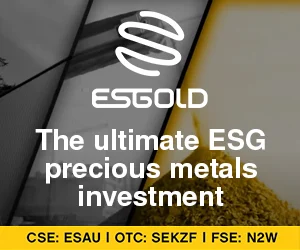The platinum market plays a pivotal role in various sectors, including automotive, chemical processing, and investment. With its unique catalytic properties and status as a precious metal, platinum is not just a commodity but a critical component in modern technology and industry. This article delves into the current state and future prospects of the platinum market, highlighting key trends, growth factors, and competitive dynamics.
Market Size and Overview
The global platinum market is projected to be valued at approximately USD 7.25 billion by 2025, with expectations to reach USD 10.41 billion by 2032. This growth represents a compound annual growth rate (CAGR) of 5.3% from 2025 to 2032. Such figures underscore the significant opportunities for business growth across various regions, making platinum a focal point for strategic decision-making.
Regional Insights
North America: The U.S. and Canada are robust hubs for automotive and chemical processing, driving consistent demand for platinum.
Latin America: Countries like Brazil and Argentina are witnessing growth in jewelry and investment sectors, further boosting platinum consumption.
Europe: Stricter emission regulations in Germany and France are increasing the adoption of platinum in automotive catalysts.
Asia Pacific: Rapid industrialization in China and India is leading to heightened demand for platinum.
Middle East: Expanding petrochemical plants in the UAE and Saudi Arabia are elevating the use of platinum in catalysts.
Africa: South Africa’s dominant mining infrastructure continues to shape global platinum supply.
Market Segmentation
The platinum market can be segmented based on product type, application, and end-user industry:
Product Type: Includes metal ingots, powders, and wires, with powders being crucial for fuel cell electrodes.
Application: Key applications include automotive catalysts, jewelry, and electronics, with catalytic converters consuming approximately 3.5 million ounces (Moz) in 2024.
End-user Industry: Major sectors include automotive, chemical processing, and investment bars, with investment bars witnessing a 12% surge in 2024.
Growth Factors
Several factors are driving the growth of the platinum market:
Automotive Emission Standards: The introduction of Euro 7 and U.S. Tier 3 regulations has raised platinum demand by 6.8% in 2024.
Fuel Cell Adoption: The installation of fuel cells reached 2.8 gigawatts (GW) in 2024, requiring approximately 0.15 grams of platinum per kilowatt, marking a 14% year-on-year increase.
Jewelry Market Expansion: Demand for platinum jewelry in Asia grew by 9% in Q1 2025, absorbing 0.8 Moz of platinum.
Recycling Initiatives: Recycling rates for platinum hit 55% of supply in 2024, helping to mitigate constraints from primary mine output.
Supply Constraints: Operational challenges in South African mines limited output growth to 2.4% in 2024.
Market Trends
The platinum market is witnessing several dynamic trends:
Hydrogen Economy Push: Subsidies in Europe and Asia have boosted platinum electrolyzer orders by 23% in 2024.
Digital Electronics Miniaturization: The demand for high-performance components has led to an 8% growth in platinum catalysts used in hard disk drives and sensors.
Investment Diversification: Amid economic volatility, investment bar purchases reached a record 1.1 Moz in 2024.
Geographic Supply Shift: South African output rose by 2% in 2024, while North American recycling capacity expanded by 10%.
Actionable Insights
Key quantitative indicators essential for market analysis include:
Production Capacity: Global primary mine output reached 6.2 Moz in 2024, with planned expansions in South Africa expected to add 0.3 Moz by 2026.
Pricing Dynamics: The average spot price stabilized at USD 1,027 per ounce in 2024, influencing revenue growth strategies for refiners.
Exports & Imports: South Africa exported 4.5 Moz in 2024, while Europe’s catalytic converter imports grew by 5.5%.
Use Case Metrics: Automotive catalysts held a 45% industry share, with labor disputes in 2024 capping supply growth by 5%.
Competitive Landscape
The platinum market is characterized by a mix of established players and emerging companies. Key market companies include:
Anglo American Platinum
Impala Platinum Holdings
Sibanye-Stillwater
Johnson Matthey
Heraeus
Competitive Strategies
Leading firms are adopting various strategies to enhance their market position:
Anglo American Platinum expanded its Mogalakwena concentrator in 2024, boosting output by 0.2 Moz.
Impala Platinum invested USD 500 million in mill upgrades, reducing production costs by 4%.
Johnson Matthey launched a high-durability fuel cell catalyst, securing multi-year offtake agreements.
Sibanye-Stillwater acquired Lonmin assets, optimizing production capacity.
Conclusion
The platinum market is poised for significant growth, driven by stringent automotive regulations, expanding applications in fuel cells, and rising demand in jewelry and investment sectors. As the market evolves, companies must navigate supply constraints and competitive dynamics while capitalizing on emerging opportunities. With a projected market size increase from USD 7.25 billion in 2025 to USD 10.41 billion by 2032, the future of platinum looks promising.
For further insights and detailed analysis, you can access the full report here.
This article provides a comprehensive overview of the platinum market, emphasizing its importance across various sectors and the factors driving its growth. For businesses and investors, understanding these dynamics is crucial for making informed decisions in this evolving landscape.




